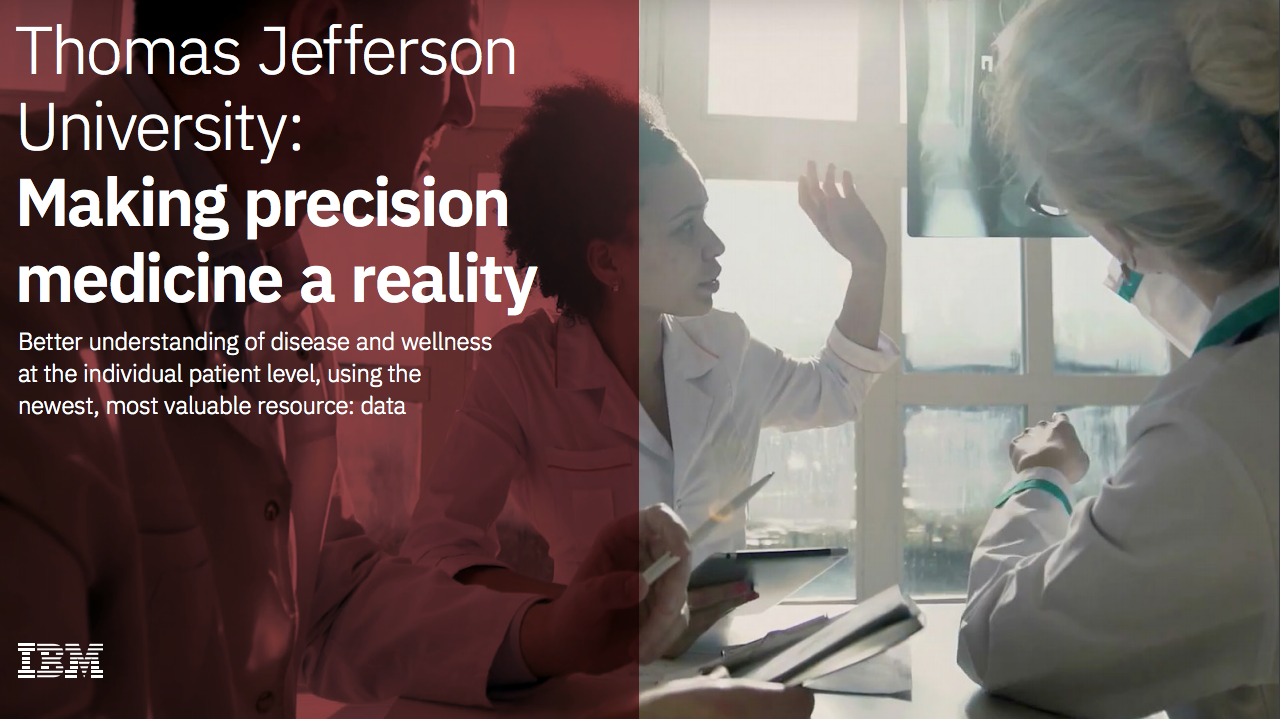Special thanks to Tom Sullivan, Kyle McGrath, and their team at IBM for their wonderful work on these videos!
The Computational Medicine Center (CMC) of Thomas Jefferson University was featured in an IBM case study. IBM case studies highlight successful client stories that utilize powerful computing environments. They emphasize the importance of such robust and powerful computing environment in academia or industry. Since its founding by Dr. Isidore Rigoutsos in 2010, our center at Jefferson has worked with IBM to build a powerful computing environment that is central to our research. We are laying the groundwork for revolutionary and powerful prognostics, diagnostics, and new therapies in Precision Medicine.
The need for High Performance Computing (HPC)
In Computational Medicine research, it is imperative to be able to handle large amounts of biomedical data, analyze it quickly and have constant access to enormous libraries. Our environment was built specifically for these purposes and IBM has been a valuable partner towards this goal.
The integration of computer science and medicine is leading to new discoveries. With a centralized environment through which every researcher has access to fast storage, abundant processing power, and multiple tools, research is taking new form.
Our center is frequently involved with analyzing large pools of biomedical datasets to better understand and improve patient care, disease prognosis, and to better understand health disparities and outcomes. The ability to leverage our robust and powerful HPC environment has allowed us to answer questions we could only dream of a decade ago. Our aim is to treat each patient as a unique individual that requires individualized care. We are laying the groundwork for revolutionary and powerful diagnostic techniques and new therapies in Precision Medicine.
From non-coding RNAs to Precision Medicine
By leveraging our HPC environment, we have been exploring how non-coding RNAs affect disease and survival. Working with large datasets and considering unique and individual patient attributes allows us to deepen our cellular understanding, identify the relationships between individualized characteristics and disease, and provide further insight on how organisms function.
Among many other results, we have discovered new miRNAs, revealed that microRNAs are produced in many variations (isomiRs), and showed that many non-coding RNAs differ per tissue, tissue state, and disease. Additionally, these molecules often differ between people from different populations, genders, and races.
The IBM Case Study of the Computational Medicine Center
The IBM case study video of Computational Medicine Center examines the relationship of medicine and complex computing, the opportunities created when putting them together, and the future of precision medicine. Additionally, a series of smaller videos summarize the great possibilities and offer the viewer insight into the CMC and the Thomas Jefferson University’s community. Finally, a pdf ebook is available which highlights the most important points of how we can make individualized patient care a reality.
Watch the videos to hear from Steve Klasko (President of Thomas Jefferson University Chief Executive Officer of Jefferson Health), Mark Tykocinski (Provost, Executive Vice President for Academic Affairs Thomas Jefferson University), Isidore Rigoutsos (Founding Director Computational Medicine Center Thomas Jefferson University), and others from the Computational Medicine Center team.
More resources
 Click here to view the ebook.
Click here to view the ebook.
